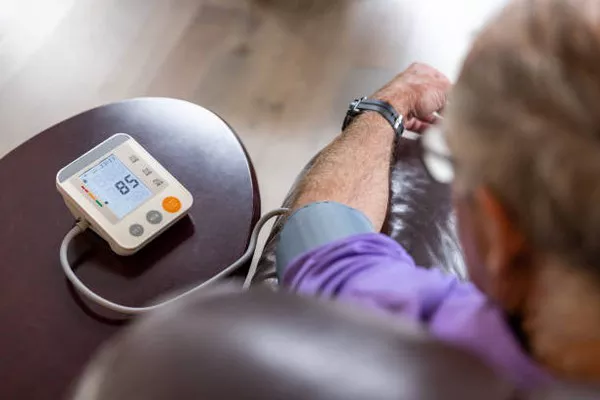Pressure gauges are essential instruments used in various industrial applications to measure and monitor pressure levels. Accurate pressure readings are critical for safety, process efficiency, and quality control. Understanding how to calculate the accuracy of a pressure gauge is fundamental for ensuring its reliability and effectiveness.
This article will discuss the principles of pressure gauge accuracy, the formula used for calculation, various error types affecting accuracy, and practical examples of how to determine accuracy in real-world applications.
Understanding Pressure Gauge Accuracy
The accuracy of a pressure gauge refers to how closely the measured value corresponds to the true or reference value. It is typically expressed as a percentage of the full-scale range (FSR) and is determined by the manufacturer.
For example, a gauge with a 1% accuracy rating means that its readings can deviate by up to 1% of the full-scale range, regardless of the actual pressure applied.
Factors Affecting Pressure Gauge Accuracy
Several factors can influence the accuracy of a pressure gauge:
Resolution: The smallest change in pressure that the gauge can detect.
Hysteresis: The difference in readings when pressure is increasing versus decreasing.
Temperature Variations: Changes in temperature can affect gauge readings.
Mechanical Wear: Over time, components inside the gauge may wear, reducing accuracy.
Environmental Conditions: Factors like vibrations, humidity, and altitude can also affect readings.
Formula for Calculating Pressure Gauge Accuracy
The general formula used to calculate pressure gauge accuracy is:
Accuracy=Maximum Error/Full-Scale Range*100
where:
Maximum Error is the highest deviation from the true value that the gauge can have,
Full-Scale Range (FSR) is the maximum value the gauge can measure.
Example Calculation:
Consider a pressure gauge with the following specifications:
Full-scale range: 100 psi
Accuracy rating: ±1%
The maximum allowable error can be calculated as:
Error=1/100 *100= 1 psi
This means that if the true pressure is 50 psi, the gauge can show readings between 49 psi and 51 psi while still being within its accuracy limits.
Error Types in Pressure Gauge Readings
To fully understand gauge accuracy, it is essential to consider different types of errors that can occur:
Systematic Errors: These are predictable and consistent errors, often caused by calibration drift or environmental factors.
Random Errors: These occur unpredictably due to factors such as slight mechanical shifts or external disturbances.
Zero Offset Errors: When the gauge does not read zero even when there is no pressure applied.
Span Errors: When the gauge has a proportional error across the entire measurement range.
Non-Linearity: Deviations from the expected linear response between applied pressure and the gauge reading.
Methods to Improve Pressure Gauge Accuracy
To ensure that a pressure gauge provides the most accurate readings possible, consider these best practices:
Regular Calibration: Periodic calibration against a certified reference gauge minimizes errors.
Proper Installation: Mounting the gauge correctly, free from vibrations or extreme temperature changes, improves accuracy.
Using the Right Gauge for the Application: Selecting a gauge with an appropriate accuracy class and full-scale range helps prevent excessive errors.
Avoiding Overpressure: Exceeding the maximum range can permanently damage the gauge and compromise its accuracy.
Performing Routine Maintenance: Regular inspections for wear, leaks, or environmental damage help maintain accuracy.
Industry Standards for Pressure Gauge Accuracy
Various industry standards define acceptable accuracy levels for different types of pressure gauges. Some common standards include:
ANSI/ASME B40.100: The American standard for pressure gauge accuracy classification.
ISO 5171: The international standard for measuring pressure in various applications.
EN 837-1: A European standard covering pressure gauges used in industrial applications.
Real-World Applications of Pressure Gauge Accuracy
Industrial Process Control: Ensuring precise pressure readings in manufacturing and chemical processing prevents equipment failure and maintains product quality.
HVAC Systems: Monitoring accurate pressure levels in heating, ventilation, and air conditioning systems ensures optimal performance.
Medical Devices: Devices such as blood pressure monitors rely on highly accurate pressure readings for patient safety.
Aerospace & Automotive Industries: Properly calibrated pressure gauges in hydraulic systems help ensure safety and efficiency.
Conclusion
Calculating the accuracy of a pressure gauge is essential for maintaining system reliability and safety. By understanding the factors influencing accuracy, the formula for calculation, and methods for improving precision, users can ensure accurate and consistent pressure measurements in various applications.
Regular calibration, proper maintenance, and adherence to industry standards help mitigate errors and enhance gauge performance. By following these principles, industries can optimize operations and maintain high levels of quality and safety in pressure-sensitive systems.

